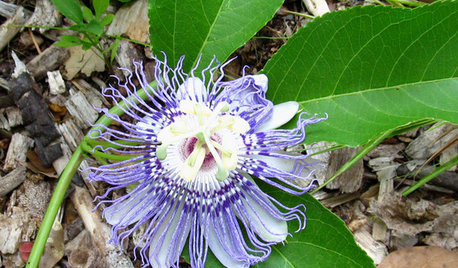Purple Haze vs. Black Cherry?
habitat_gardener
16 years ago
Related Stories

DECORATING GUIDESColor Feast: When to Use Purple in the Dining Room
Decadent and different, purples from lavender to plum can make a dining area a treat for the eyes
Full Story
COLORDreaming in Color: 8 Enchanting Purple Bedrooms
Lie down with lavender or wake up to vivid violet for a bedroom that both calms and energizes
Full Story
BLACKColor Guide: How to Work With Black
Take a walk on the dark side — your home has nothing to fear with this color when you know how to use it
Full Story
BLACKCooking With Color: When to Use Black in the Kitchen
Consider sampling Caviar or Cracked Pepper on your kitchen walls or cabinets for richness and impact
Full Story
COLOR7 Inky Colors to Use Instead of Black
Is black too stark and dramatic for your taste? Try navy, charcoal, chocolate or another alternative for a deep, moody space with character
Full Story
REMODELING GUIDESYour Floors: Zebra, Tiger, and Teak Wood, Oh, My!
Get the Pros and Cons of Exotic Woods: Hickory, Cherry, Rosewood and More
Full Story
DECORATING GUIDESRoom of the Day: Midcentury Modern Meets the 1840s
Milo Baughman chairs and black lacquer find a home in a traditional setting, making for a cool, eclectic Pennsylvania living room
Full Story
COLOROpposites Attract: Complementary Color Combos
Use the power couples of the color wheel — blue and orange, purple and yellow, red and green — to spice up any decor scheme
Full Story
GARDENING GUIDESGreat Design Plant: Passiflora Incarnata
Enjoy the amazing flowers and edible fruit of U.S. native Passiflora incarnata (also known as maypop) — the butterflies sure do
Full Story
DECORATING GUIDESWhat Goes With Dark Walls?
Bring out the beauty of dark blue, charcoal and black walls with these decorative matchups
Full StoryMore Discussions






HoosierCheroKee
LandArc
Related Professionals
Coram Landscape Contractors · East Hanover Landscape Contractors · Lexington Landscape Contractors · Lynn Landscape Contractors · Mission Landscape Contractors · North Ridgeville Landscape Contractors · Pleasant Hill Landscape Contractors · Saint Paul Landscape Contractors · Irving General Contractors · Pinewood General Contractors · Spencer General Contractors · New York City Decks, Patios & Outdoor Enclosures · Portage Decks, Patios & Outdoor Enclosures · Reisterstown Decks, Patios & Outdoor Enclosures · Woodstock Decks, Patios & Outdoor Enclosuresbart1
mule
anthony_toronto
mule
anthony_toronto